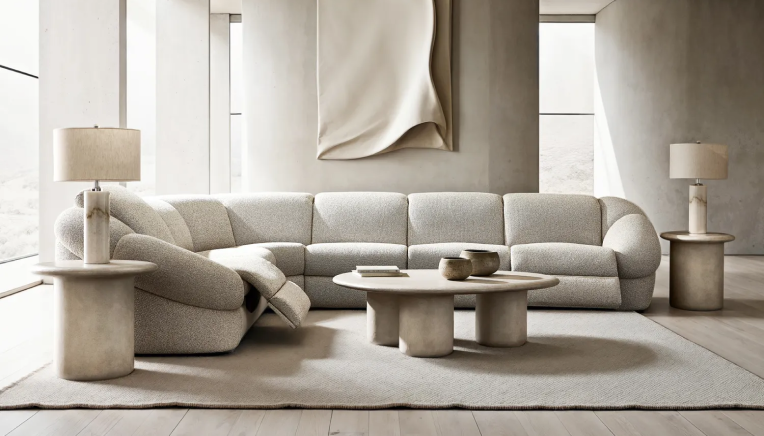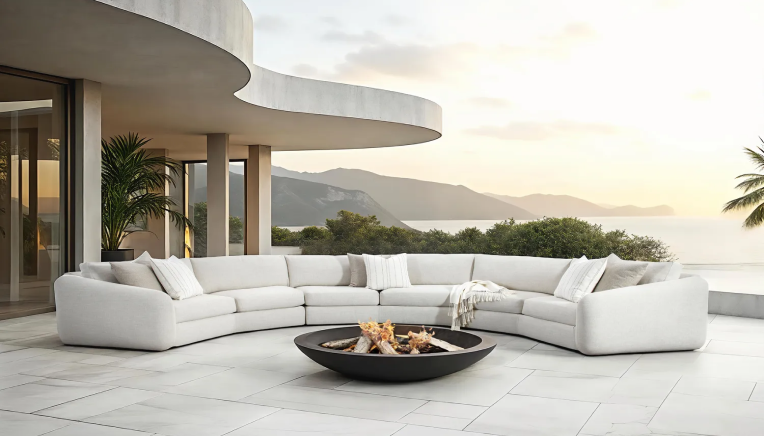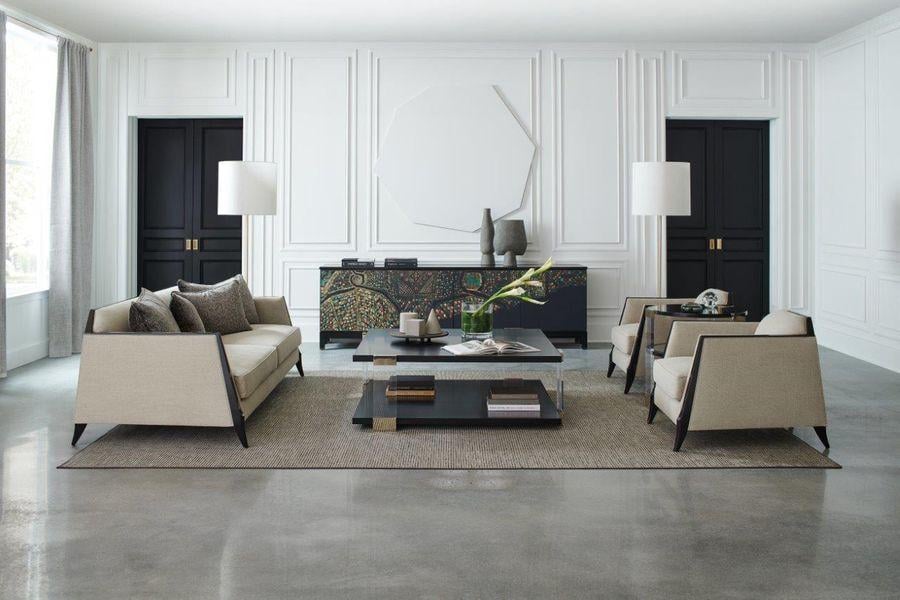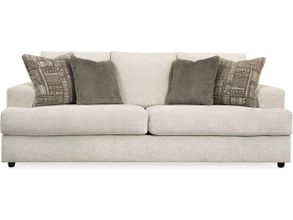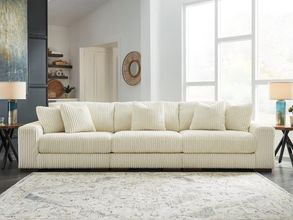
Everyone has something they look out for when choosing a sofa for their home. It could be functionality, style, or fabric. Sometimes, it may even be something as simple as color. Regardless of your peculiar preference, one thing should forever be non-negotiable: the depth of the sofa.
Let's face it — the ecstasy of getting a fashionable, colorful sofa fades quickly. At the end of the day, what you'd be most grateful for is how comfortable your sofa feels, even after many years of use. The sofa's depth is one factor determining how comfortable it'll be in the long run. That's why it's an all-important consideration when making a sofa purchase.
So, what sofa dimensions should you look for when choosing your home's sofa? Find out below.
What Is the Standard Sofa Size?
Although there isn't a set standard for sofa measurements, they typically fall within the range of 36" long, 40" deep, 60" wide, and 19" in height at the seat. However, larger and smaller options allow you to choose the one that best meets your requirements. Sofas at the upper end may be an appropriate choice if your rooms have high ceilings. However, go for smaller ranges if your home has low ceilings.
Standard three-person sofas typically range in length from 70" to 87", with 84" being the most typical measurement. Choose a long couch with a length of 87" to 100" or take into account an extra-long sofa that is longer than 100" if you're looking for sofas with plenty of seating.
Pro tip: It is best to ensure that your two pieces have matching heights if you want them to be in the same space.
What Is the Average Sofa Height?
The typical measurement for most of the seated furniture you'll find is 30" to 36." That's the height of a traditional sofa. The sofa you're looking for or that best suits your peculiarities may, however, need to be taller or lower depending on the size of your living room and house.
For example, if you live in an apartment, you may notice that a shorter sofa best serves your small living room. That's because they are convenient enough to transport, as they can easily pass through elevators, down hallways, upstairs, etc. On the other hand, if you own a home, you have more discretion over your preferred sofa height. As such, you'll desire to be particularly dependent on the style you love.
What Is the Typical Sofa Depth?
The term "sofa depth" refers to the measurement of the sofa's interior depth (measured from the front of the seat to the back cushion) and the outer depth (measured from the rear of the couch to the front). The level of comfort a couch offers increases as its depth increases. However, these couches aren't always the best options for those who are shorter than normal in height. Generally speaking, tall people favor deeper sofas over shorter folks. That's especially true for those who love to keep their legs on the floor.
Pro tip: if comfort is everything for you, add throw pillows to your deep couch to make up for the depth.
Functionality is the next factor to consider when choosing sofa depth for your home. Do you want a sleeper sofa or a sofa that reclines? If yes, focus on a seat as deep as is comfortable. If you want your sofa to be in your conversation area, your best bet might be a shallow seat. Are you concerned about available space? Then you might find the exact depth you need in a small space or sleeper sofa.
Meanwhile, for those who love sectionals, note that sectional shape and configuration may also affect the depth of the sofa seat. Finally, the kind of cushions you use will also affect how deep your sofa is. So, consider that too.
How Deep Are the Cushions on a Deep Seating Sofa?
A deep-seated sofa typically has a depth greater than 40 inches. This allows whoever sits on the sofa to lean back or lay across it comfortably. A shallow sofa, on the other hand, often has a depth between 31" and 40", providing an upright position for sitting that supports your back and places your feet comfortably on the floor.
What's the Length of a 4-Person Couch?
A four-person couch is an excellent option for organizing your seating area if comfort is a top priority. This type of couch provides premium comfort for those with large families or who have extra space in their living rooms. Four-person couches typically have seating areas that are roughly 90" in length, which excludes the length of the two arms on either side of the couch. The smallest of these sofas should be approximately 100" (254"), or eight feet, in total length.
How Different Styles Impact Height
Depending on the kind of sofa you want for your house, you may discover that some designs require fewer specifications than you had anticipated. For example, contemporary and modern furniture often come in smaller sizes than conventional and classical ones. This is so that each element blends in with its surroundings, which is the whole idea of minimalism. Therefore, having a large, bold piece negates the minimal design goal.
How to Measure Your Space to Accommodate Your Sofa
Now that you know the details about the perfect sofa dimensions for your home, it's time to look into the proper measurement techniques to decide the size of sofa you need or your room can accommodate.
If you don't take measurements of your home before buying a sofa, you can choose either too big or too small for the space. Surely, you don't want that. So, let's delve into the three essential steps for choosing the ideal couch for your space already:
Measure the Area
The first step is to measure your room's length and width to obtain a sense of the size of the sofas that will fit there. Just a little open space will complement the sofa and make it look majestic and poised. So, if your room is big and has high ceilings, it's a good idea to go for sofas on the larger side with taller backs.
If your new sofa is transported through any entry doors or hallways, be sure to measure its widths and heights as well. This is to ensure that your new sofa goes through the door perfectly. It's pretty straightforward. Simply take measurements of the doors' height, width, and entry clearance first. Given that you might have to turn your sofa on its side to fit it into the space, you should also measure the door's diagonal width.
Generally speaking, you should attempt to get furniture that is at least four inches narrower than your doorway. Also, make a mental note of any unusual corners, wall artwork, light fixtures, or other potential obstructions that could prevent the sofa from being moved freely.
Tape It
After measuring your room, the next step is to tape the area. To do this, choose the location where you want to put your new sofa. To maintain the room's natural traffic flow, leave 30" of space for walking in front of the sofa. Make sure there is at least 12" to 18" of space between your sofa and coffee table if you intend to pair the two pieces of furniture.
Next, draw a rough rectangle with masking tape on the ground where you intend to put the sofa. You don't have to be precise at this stage as long as you are aware of the standard sofa proportions; you are seeking to build a basic shape rather than an accurate sofa outline.
Measure the Taped Area
If your tape is in a good location and you are satisfied with its size, you can measure the rectangle's width and length. When searching for a sofa, you'd use these measurements as the largest sofa dimensions that will fit your room. As such, find a sofa that either closely fits those measurements or is slightly smaller. You can choose the height of the sofa, but keep in mind that it needs to fit under any window sills or shelves around it.
Note that seat height, depth, and other secondary measurements are more important for comfort than placement. If you have tall family members, ensure that your sofa seat is as high and deep as necessary. Do the opposite if your family is on the petite side.

